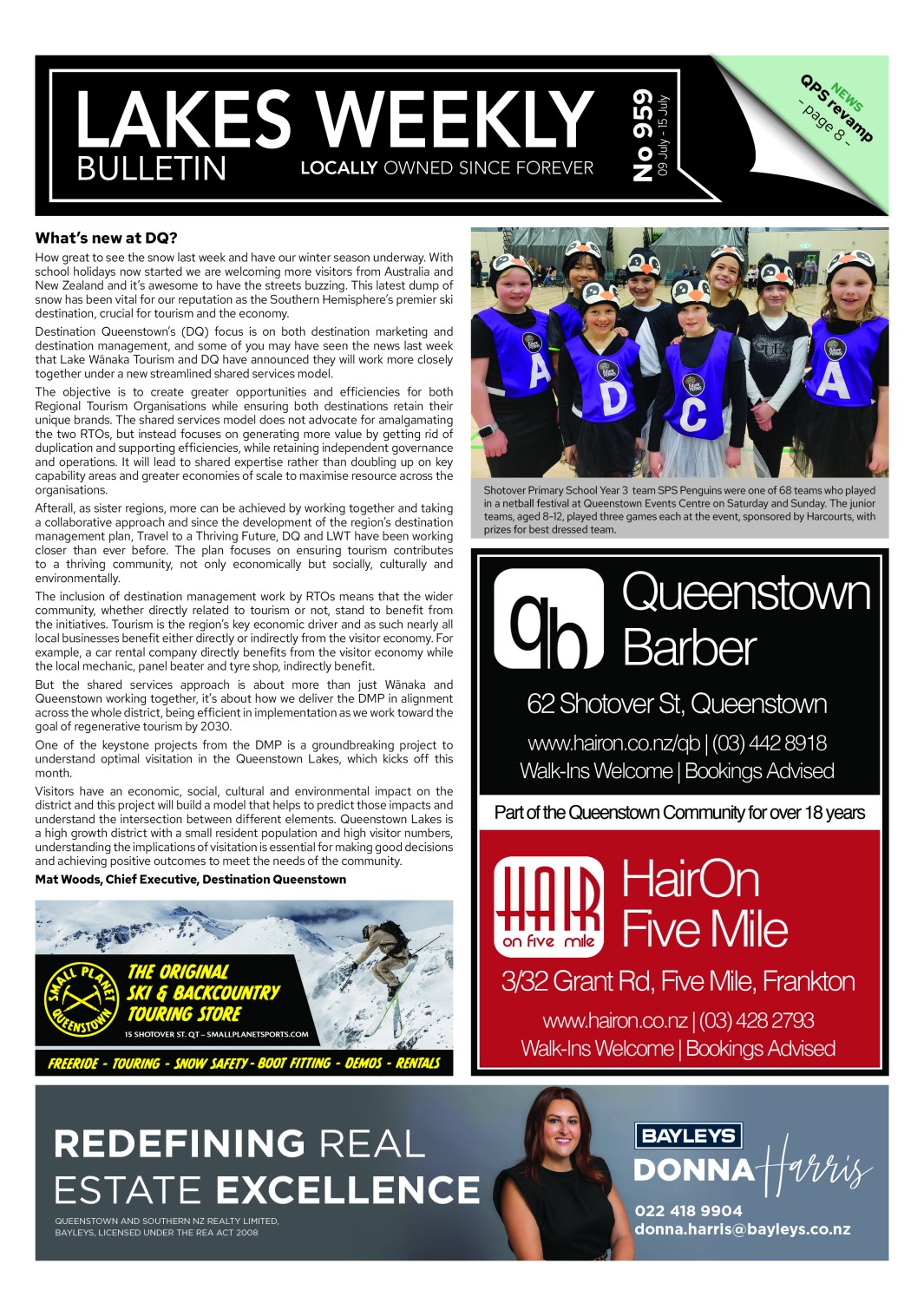Issue #959
What’s new at DQ?
by Mat Woods, Chief Executive, Destination Queenstown
How great to see the snow last week and have our winter season underway. With school holidays now started we are welcoming more visitors from Australia and New Zealand and it’s awesome to have the streets buzzing. This latest dump of snow has been vital for our reputation as the Southern Hemisphere’s premier ski destination, crucial for tourism and the economy.
Destination Queenstown’s (DQ) focus is on both destination marketing and destination management, and some of you may have seen the news last week that Lake Wānaka Tourism and DQ have announced they will work more closely together under a new streamlined shared services model.
The objective is to create greater opportunities and efficiencies for both Regional Tourism Organisations while ensuring both destinations retain their unique brands. The shared services model does not advocate for amalgamating the two RTOs, but instead focuses on generating more value by getting rid of duplication and supporting efficiencies, while retaining independent governance and operations. It will lead to shared expertise rather than doubling up on key capability areas and greater economies of scale to maximise resource across the organisations.
Afterall, as sister regions, more can be achieved by working together and taking a collaborative approach and since the development of the region’s destination management plan, Travel to a Thriving Future, DQ and LWT have been working closer than ever before. The plan focuses on ensuring tourism contributes to a thriving community, not only economically but socially, culturally and environmentally.
The inclusion of destination management work by RTOs means that the wider community, whether directly related to tourism or not, stand to benefit from the initiatives. Tourism is the region’s key economic driver and as such nearly all local businesses benefit either directly or indirectly from the visitor economy. For example, a car rental company directly benefits from the visitor economy while the local mechanic, panel beater and tyre shop, indirectly benefit.
But the shared services approach is about more than just Wānaka and Queenstown working together, it’s about how we deliver the DMP in alignment across the whole district, being efficient in implementation as we work toward the goal of regenerative tourism by 2030.
One of the keystone projects from the DMP is a groundbreaking project to understand optimal visitation in the Queenstown Lakes, which kicks off this month.
Visitors have an economic, social, cultural and environmental impact on the district and this project will build a model that helps to predict those impacts and understand the intersection between different elements. Queenstown Lakes is a high growth district with a small resident population and high visitor numbers, understanding the implications of visitation is essential for making good decisions and achieving positive outcomes to meet the needs of the community.
WHY ADVERTISE YOUR BUSINESS WITH US
The Lakes Weekly is part of Queenstown Media Group (QMG).
QMG is Queenstown’s leading locally owned and operated media company with print, online and social platforms that engage locals with what they care about — everything local!
The Lakes Weekly delivers stories and news that connects with local so they come away each week better connected to their community. Advertising sits within this curated content environment, and it’s a trusted relationship between readers and the Lakes Weekly. Advertisers benefit from the association with the LWB brand values.
The Lakes Weekly is hand delivered to every business in Queenstown, Arrowtown, Frankton, Five Mile Remarkables Park and Glenda Drive on Tuesday. Copies are available in service stations, libraries and drop boxes throughout the region and every supermarket throughout the Queenstown basin and Wanaka.
Online the issue is available Monday afternoon, on lwb.co.nz and the Qtn App.
3,500
Printed copies
each week
13,250
Estimated weekly
readership
Latest issue






